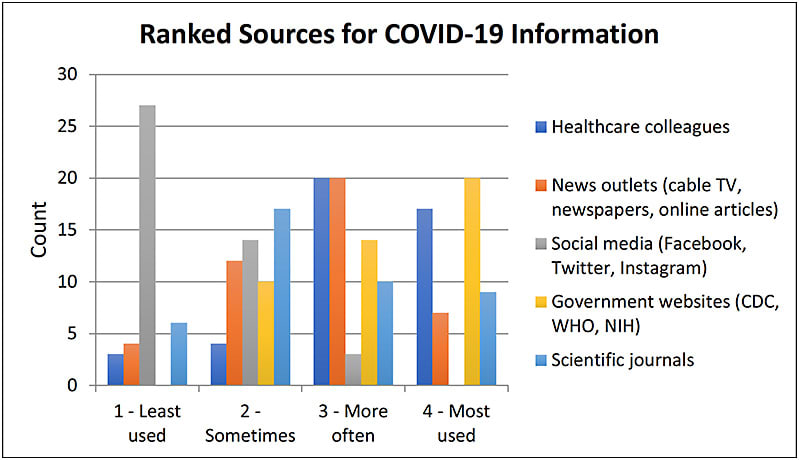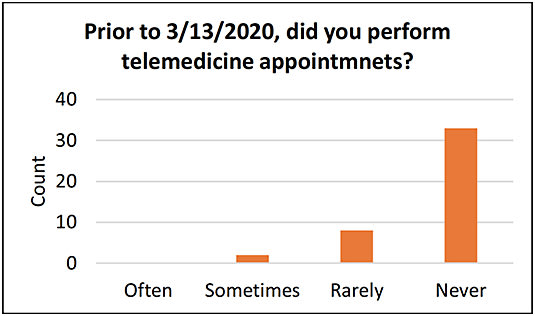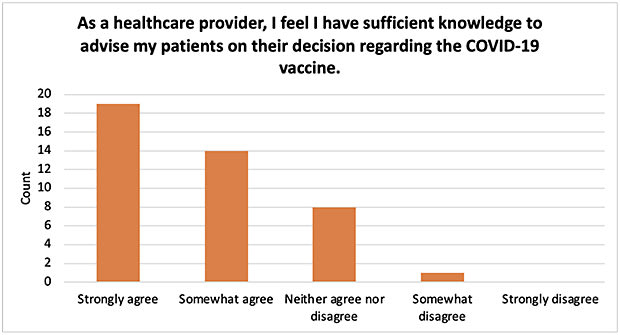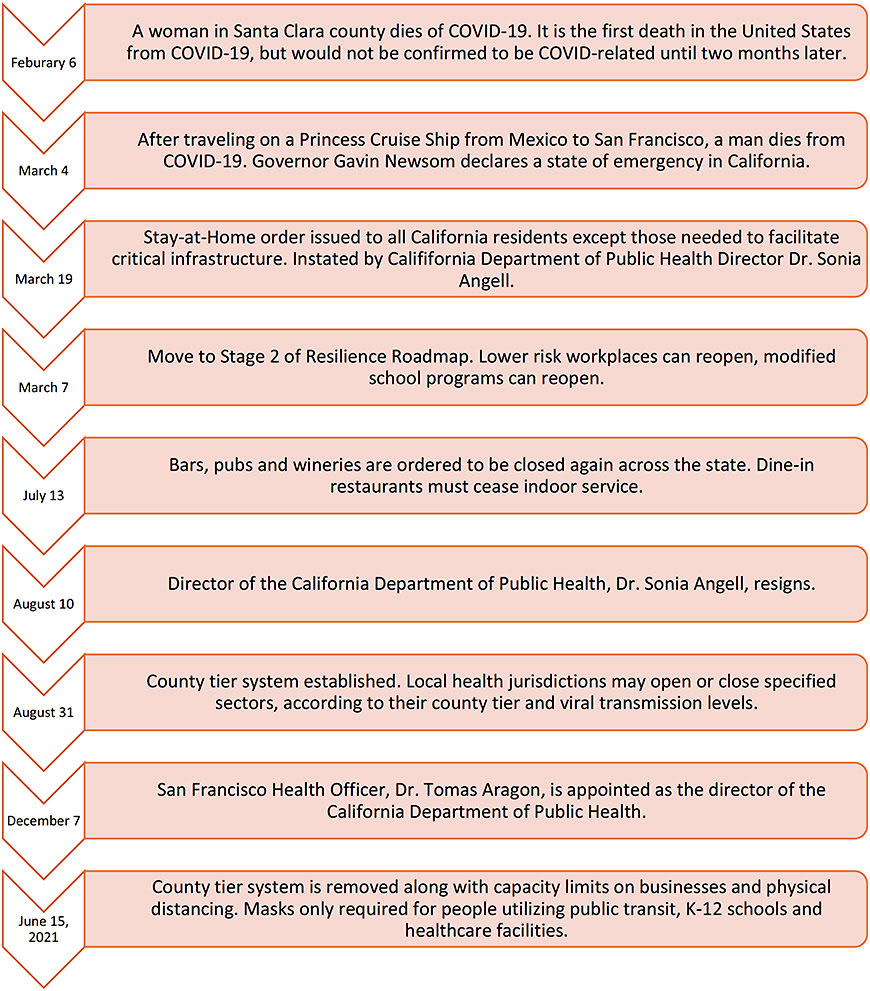The following study was completed as part of a T35 research training fellowship by Isabel Kazour, a second-year optometry student at the University of California Berkeley School of Optometry, under the guidance of her mentor, Nancy McNamara, O.D., Ph.D.
On Feb. 6, 2020, a 57-year-old woman in Silicon Valley passed away from suspicious causes. While it was not known at the time, her death is recognized as one of the earliest COVID-19-related fatalities in the United States. California was one of the first states to experience an influx of COVID-19 from trans-Pacific travelers that led to statewide transmission. Since these early days, the virus has taken the lives of 691,000 in the United States, including more than 69,000 Californians.
The goal of our study was to understand the role of the optometric community in the pandemic response for the San Francisco Bay Area. Specifically, the survey asked these questions:
- What sources of information are trusted for virus-related news?
- Which public locations are perceived to hold a high risk for viral transmission?
- How has the pandemic prompted a change in telemedicine appointment rates?
- What ophthalmic procedures have been routinely performed since Mach 2020?
- Are O.D.s vaccinated? Are they comfortable talking with patients about COVID-19 vaccine options?
Survey Findings
The Qualtrics survey was sent to practicing optometrists located in one of the nine San Francisco Bay Area counties. Subjects were recruited via optometric society listservs, including the Bay Area Optometric Council and the UC Berkeley Optometry Alumni network. At the conclusion of our study, there were 46 respondents in total. Many respondents were in private practice or worked at a Berkeley-affiliated clinic. This study lasted from June 1 to Aug. 7, 2021.
The following is a summary of the survey’s findings:
Demographics
| Age (Y) | Responses | % |
| 18-29 | 3 | 7.1% |
| 30-39 | 13 | 31.0% |
| 40-49 | 5 | 11.9 % |
| 50-59 | 8 | 19.0% |
| 60-69 | 10 | 23.8% |
| ≥70 | 3 | 7.1% |
| Gender | Count |
| Male | 12 |
| Female | 29 |
| Prefer not to say | 2 |
Table 1 and Table 2: Age breakdown of respondents. Gender breakdown of respondents. Note: Not every respondent answered every question, so totals do not reach 46 evenly.
Results

| List other sources used for COVID-19 Information. | |
| Source | Count |
| Center for Disease Control and Prevention (CDC) | 17 |
| County Health Website | 9 |
| California Optometric Association (COA) | 6 |
| American Optometric Association (AOA) | 4 |
| Berkeley Safety Committee | 4 |
| Health Care Colleagues | 2 |
| Cal/OSHA | 2 |
| Clinic Safety Manual | 1 |
| On a scale of 0 “not at all worried” to 4 “very worried,” how would you rate your personal concern regarding the following issues? | ||
| Variable | Average | Median |
| Contracting COVID-19 at a gym | 2.93 | 3.0 |
| Contracting COVID-19 from airplane travel | 2.69 | 3.0 |
| Contracting COVID-19 at a restaurant | 2.35 | 2.0 |
| Contracting from a masked patient while at work | 1.57 | 1.0 |


| Check all the following procedures you have performed since March 2020 | ||
| Procedure | Number checked | Percentage (n = 46) |
| Slit Lamp Exam | 42 | 87.5% |
| Indirect Ophthalmoscopy | 40 | 83.3% |
| Contact Lens Training | 32 | 66.7% |
| Ocular Irrigation | 22 | 45.8% |
| Direct Ophthalmoscopy | 17 | 35.4% |
| Are you fully vaccinated against COVID-19 at this time? | ||
| Yes | 41 | 97.6% |
| No | 1 | 2.4% |

Conclusion
While this survey had a small sample size and was localized to Northern California, the data show:
- The most utilized information sources for COVID-19 news were government websites and health care colleagues, while social media ranked as the least utilized resource.
- More practitioners are conducting telemedicine appointments, a trend which may continue due to an increase in Medicare reimbursements that are advantageous to both the provider and the patient, according to the Centers for Medicare & Medicaid services website.
- Procedures routinely performed by optometrists continued to take place despite the pandemic, including slit lamp exams and indirect ophthalmoscopy.
- Nearly all optometrists surveyed, 97.6%, reported being fully vaccinated. This is significantly greater than the surrounding community of Alameda County, where the vaccination rate peaked at 67.39% at the conclusion of the survey and 77.8% at press time, according to the Alameda County Public Health Department.
- Less than half of respondents said they strongly agree that they have sufficient knowledge to discuss vaccination options with their patients. OM
Timeline of COVID-19 in California: How did we get here?

References
- Coronavirus resource center. 2021. Johns Hopkins University. https://coronavirus.jhu.edu/map.html .
- Hasselfeld, Brian. “Benefits of Telemedicine.” Johns Hopkins Medicine, www.hopkinsmedicine.org/health/treatment-tests-and-therapies/benefits-of-telemedicine .
- “MEDICARE Telemedicine Health Care Provider Fact Sheet.” CMS, www.cms.gov/newsroom/fact-sheets/medicare-telemedicine-health-care-provider-fact-sheet .
- Procter, R. 2021. Remember When? Timeline marks key events in California’s year-long pandemic grind. Cal Matters. Accessed August 12th, 2021. https://calmatters.org/health/coronavirus/2021/03/timeline-california-pandemic-year-key-points/ .
- “COVID-19 Data: Real-time data of the impact of COVID-29.” https://covid-19.acgov.org/data.page?#vaccination .



